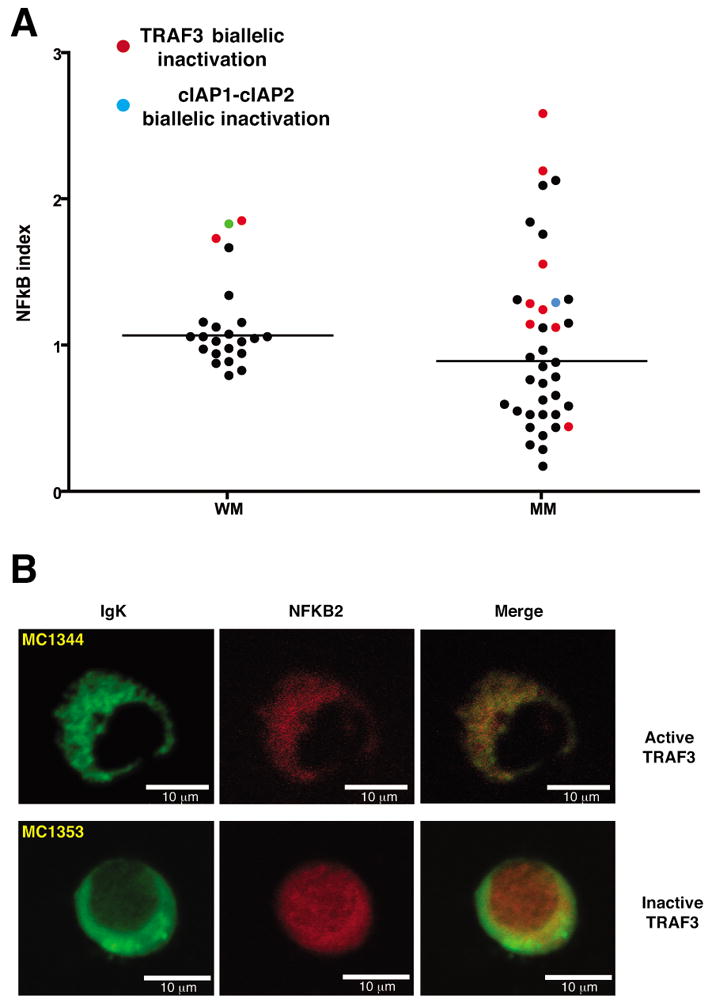Figure 5.

TRAF3 inactivation is associated with activation of the non-canonical NF-kB pathway. A) NF-kB index in WM. Our MM cohort is included for comparison. The patients with TRAF3 and cIAP1-cIAP2 inactivation are highlighted in red and blue, respectively. An association between patients with TRAF3 inactivation and high NF-kB index is clearly observed in WM. The case with the second highest index value showed a very low TRAF3 expression (green dot; see Supplementary Table S6), suggesting its inactivation. However, no DNA or cDNA was available for performing aCGH or DNA sequencing. The bars correspond to the median values. B) Immunofluorescence staining confirmed the association between TRAF3 inactivation and nuclear localization of NFKB2, indicating p100 to p52 processing (patient MC1353). A patient with close-to-median NF-kB index and active TRAF3 was used as a negative control (MC1344).
